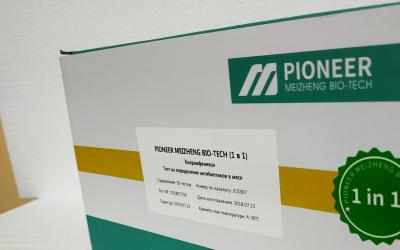There are many blank spots in understanding the reproductive health of dairy and beef cows

Dr. Dinesh Dadarwal, an associate professor in the Department of Large Animal Clinical Sciences at the University of Saskatchewan’s Western College of Veterinary Medicine, comes from a long line of livestock farmers. In India, his extended family continues to raise water buffalo, cows, camels, sheep, and goats. After training as a veterinarian, Dardawal began his doctorate at the University of Saskatchewan, CANADA , specializing in bovine reproductive HEALTH in 2007 after working in a small veterinary clinic . After completing his doctorate in 2012, he returned to India to teach before returning to the university as a resident. During his postdoctoral residency, he narrowed his focus to theriogenology, a subspecialty of veterinary medicine that deals with animal reproduction.
The scientist has now focused his research on the postpartum health of the uterus of dairy and beef cows, as he believes there are many questions that need to be answered.
"During the first week after calving, the cow's uterus is enlarged, inflamed and seeded with bacteria. This is normal. To prepare the cow for breeding again, three things need to be done. So, if the uterus weighs about 10 kilograms immediately after birth, it needs to be reduced to about one kilogram. It is necessary to stabilize the bacterial load and restore the uterine mucosa. It should be understood thatThe bacteria involved in inflammation in dairy cows in the postpartum period are commensals, they are constantly present in the uterine tract. Hence the question - what conditions allowed the bacteria to cause persistent inflammation?
"Studies have shown that 20 to 50 percent of dairy cows develop inflammation that continues into the fourth, fifth and sixth weeks after calving. Dairy cows with this persistent inflammation tend to have lower conception rates in the following breeding season. Importantly, when the uterus is not healthy enough to support another pregnancy, the risk of miscarriage is very high if conception occurs," says Dadarwal.
He also wants to know if postpartum uterine inflammation is more common in dairy cattle than in beef cattle. Dairy cows are bred and raised to produce high MILK yields, while beef cows are bred to raise a calf, usually while the pair is out on pasture.
“Are we creating two different populations? Beef cows are not metabolically stressed. They are not devoting all their nutritional resources to milk production . Does that mean they will have better uterine health than dairy cows? Can we use this beef cow as a low metabolic stress model to study uterine health? What happens if you subject a beef cow to metabolic stress and how does that affect fertility?” the expert asks.
Dadarwala’s multi-year study, funded by a Natural Sciences and Engineering Research Council of Canada (NSERC) Discovery Grant, will be conducted at the University of Saskatchewan’s Centre of Excellence in Livestock and Forage Science and the Rayner Dairy Research and Training Centre. The work will examine inflammation dynamics and fertility in mother-daughter pairs and unrelated older and younger cows in both beef and dairy herds, as well as the bacteria themselves.
The data will be collected in three ways: video surveillance, GPS-tracked ear tags, and tail sensors. Ultimately, Dadarwal hopes to develop a tool or test that can help identify cows that are experiencing inflammation and establish selection criteria for a bovine uterine health system . He noted that cattle producers today are interested in tools to maintain ROI, whether it’s selecting breeding animals or incorporating new technologies into their management strategies, such as AI-powered herd health apps that send text messages about issues. To that end, Dadarwal will be collaborating on smart technologies with Dr. Jaswant Singh (BSc, PhD), a professor at the University of Saskatchewan’s Western College of Veterinary Medicine.
Read together with it:
- A Rostov broiler farmer was fined 750,000 rubles for selling meat contaminated with salmonella.The lawsuit against the poultry farm was filed by ROSSELKHOZNADZOR based on the results of an inspection that revealed serious violations of the production process. These included rust on metal structures, which compromised product quality, and unsanitary conditions that facilitated the growth of pathogenic microflora. A batch of Blagoyar pork legs with the backbone proved particularly dangerous, ...
- Фон дер Ляйен заявила о смене подхода к санкциям против РоссииНовый подход подразумевает не предложение поэтапных санкций, а «гораздо более жесткие меры» в отношении энергетики, финансовых услуг и торговли, все это уже входит в 19-й пакет, заявила глава ЕК Урсула фон дер Ляйен Евросоюз при подготовке 19-го пакета санкций против России меняет подход, переходя «от поэтапного усиления давления к жестким мерам». Об этом заявила глава Европейской комиссии Урсула ...
- "Cardboard Superpower." What is Poland prepared to take into 2026?Photo: Unsplash The Polish government has submitted its draft 2026 budget to the Sejm. In short, the hole in the Polish budget is growing even wider, and the national debt is on the verge of skyrocketing. Meanwhile, military spending is breaking records, cementing Poland's status as NATO's leader in defense spending as a percentage of GDP. However, the value of such leadership is questionable. Or ...




























































